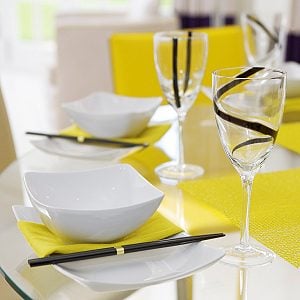
1. No-Spot Glassware
To prevent spotting on glass pitchers, candlesticks, drinking glasses, and any other everyday or special occasion glassware, soak a piece for 3-4 minutes in a bath of 2 gallons water and ½ cup white vinegar. Shake off any water droplets and then dry and polish the piece with a clean soft cloth.
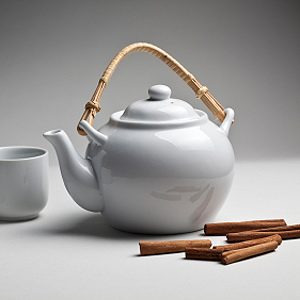
2. Protect a Teapot
When you store your treasured china teapot at the back of a cabinet for a long time, chances are it will be banged by the dishes up front at some point. To protect the spout, slip a toilet paper tube over it and secure the tube with masking tape. Or sheathe the spout with the thumb from an old leather glove or thick mitten. You’ll also want to use one of these sheathes when you’re packing the teapot for a move.

3. Remove Invisible Film
Though drinking glasses, mugs, and everyday plates and bowls might look clean after a washing, they could still be covered with a thin film of grease, invisible to the naked eye. See for yourself by making a thin paste of baking soda and water, dipping a sponge into it, and rubbing the glass or china surface well. Rinse, dry with a soft cloth, and your dishes may sparkle as never before and even feel different to the touch.
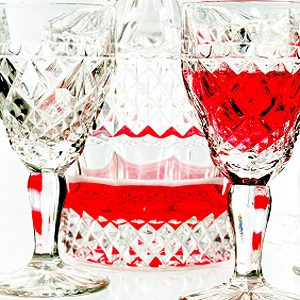
4. Tea for Crystal
If residue dries inside a crystal pitcher that won’t tolerate hard scrubbing without being scratched, fill it with a mixture of 2 parts strong black tea and 1 part white vinegar. After it sits overnight, discard the solution and wash the pitcher with a soft cloth dipped in soapy water.
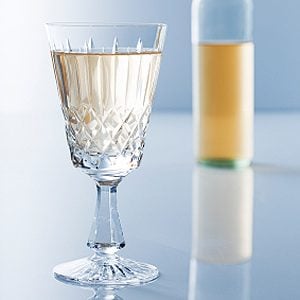
5. Cleaning Etched Crystal
If you have deeply etched crystal, use an old-fashioned shaving brush or large make-up brush to work soapy water into the ridges and crevices at cleaning time. These brushes are rigid enough to root out dirt without scratching the crystal. To rinse, hold the piece under running water.
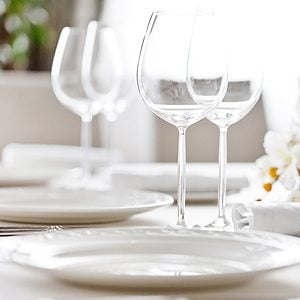
6. Smooth Out Nicks and Scratches
If you notice a small nick on the edge of a drinking glass, use an emery board to smooth it out. To eliminate a scratch on a glass, rub it out with non-gel white toothpaste on a soft cloth, then rinse. The mildly abrasive toothpaste will smooth the glass just enough to make the scratch invisible.
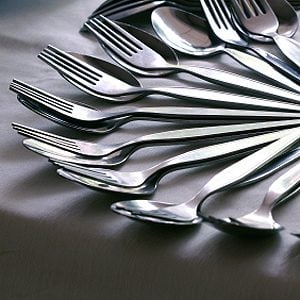
7. Despotting Stainless
If you think that vinegar and a paper towel are all you need to rub spots off stainless steel knives, forks, and spoons, guess again! The spots will come clean only if you dip the vinegar-soaked paper towel into a saucer of baking soda. After rubbing off the spots, wash the utensils as you usually do and dry them thoroughly right away.
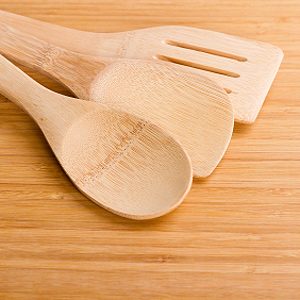
8. Easy Waxing for Wood
To keep your wooden spoons and salad sets looking like new, wash and dry them and then rub them down with wax paper. The thin coating of wax will help keep wood from drying out.
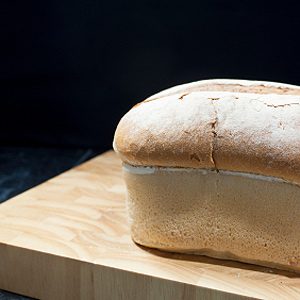
9. Scrub that Butcher Block
Putting your wooden cutting board in the dishwasher is a no-no, as is letting it soak in your sink. That said, keep it clean and you’ll avoid bacterial mishaps and the not-so-pleasant illnesses that are related to them. To clean your wooden cutting board, scrub it well with a lightly-abrasive cleansing powder and a nylon scrubbing pad, and wipe it down with hot, soapy water. Rinse, dry it well, and be safe.
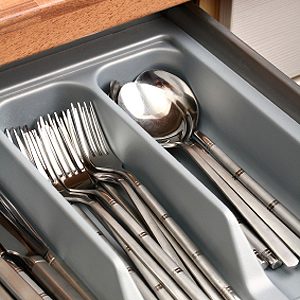
10. Wrap Silver in Plastic
When putting away silverware, wrap each utensil in two layers of plastic wrap to shut out air. Exposure to air causes the oxidation that tarnishes silver.